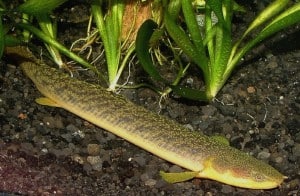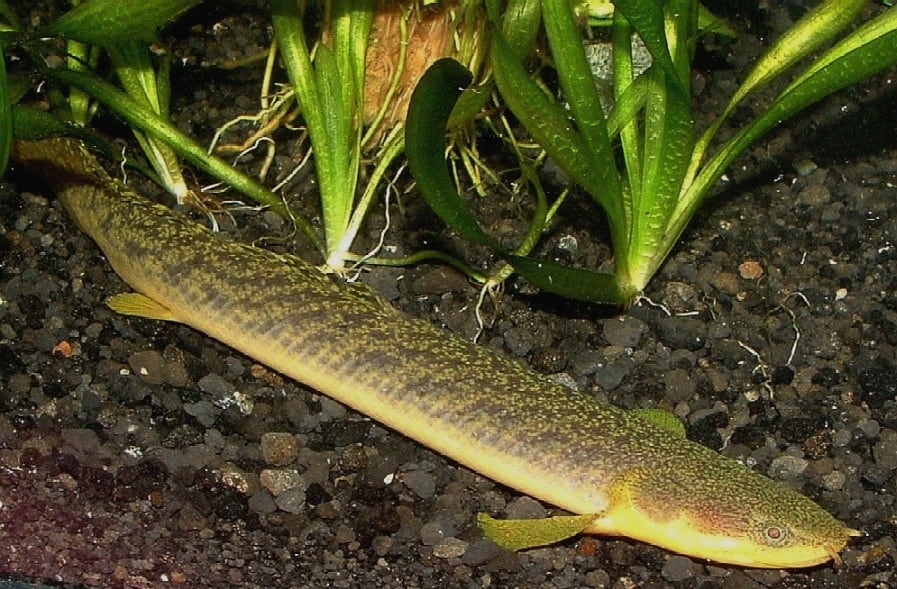
Common name: Marbled Bichir, Palmas Bichir, Shortfin Bichir
Scientific name: Polypterus Palmas Palmas
Average Adult Fish Size: 13 inches / 32.5 cm
Place of Origin: Ghana, Democratic Republic of Congo, Cameroon, Liberia, Guinea, Ivory Coast, Sierra Leone
Typical Tank setup: A well decorated aquarium with well rooted and over hanging plants is appreciated as Bichirs are mainly nocturnal and do not like bright lighting. The base of the plants need to be protected by rock work though, otherwise a large Bichir will eventually uproot and destroy them. Offer plenty of caves in the form of rock work and bog/wood/driftwood along with medium to medium-fine sand or gravel as a substrate.
Recommended Minimum Aquarium Capacity: 50 gallon / 200 litre. Choose an aquarium with wide and long base dimensions over a tall tank of the same capacity.
Compatibility: All Bichirs are relatively peaceful with other fish that are too large too eat. They will eat others of their own kind given the chance though, so other Bichir tankmates should be close to the same size. Sometimes Bichirs will squabble among themselves over food, but rarely is any damage done.
Temperature: 74 – 82 Deg F / 23 – 28 Deg C
Water chemistry: pH 6.2 – 7.5
Feeding: Most Bichirs will adjust to your feeding schedule, but they are mainly nocturnal feeders. Feeding just before lights out is often a good idea, especially if your Bichir seems shy, or very slow to eat. Feed meaty live foods such as black worms, blood worms, and earthworms along with frozen foods such as brine shrimp, mysis shrimp, and beef heart. Dried foods are not always accepted, but eventually most Bichirs will accept a quality pellet, tablet, or stick that is suitable to their size.
Sexing: The anal fin of the male is longer and wider than the females.
Breeding: Specifics are unknown.
Additional Information: Always make sure the aquarium is tightly covered with no open holes or means of escape. Bichirs are messy eaters, so provide good filtration and frequent partial water changes to maintain good water quality. Even though they are bottom dwellers, they must be able to surface when they feel like it. This is because they breathe oxygen from the air as well. Always ensure that your Bichir has enough room to go up for a fresh breath of air.


Related Posts
Croaking Gourami – Trichopsis vittatus
Benthochromis Tricoti
Large-eyed Mouthbrooder – Callochromis Macrops